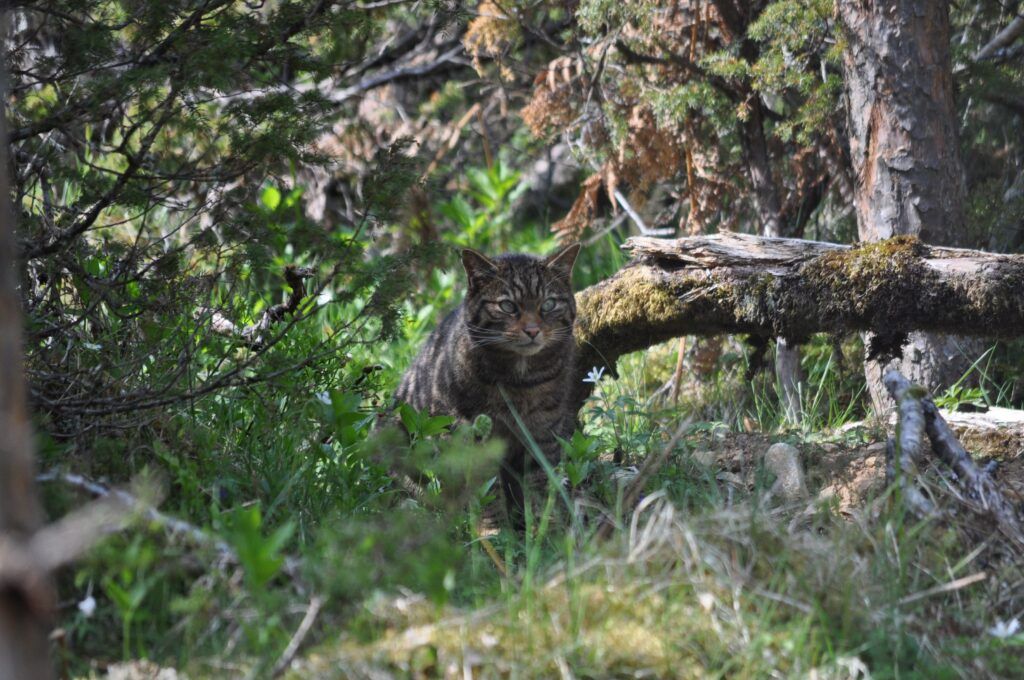We’re delighted to confirm that this June, 22 wildcats were released into undisclosed locations within the Cairngorms National Park. This is a huge milestone in the conservation of this critically endangered species and is the first of further releases over the next three years. The aim is to release about 60 wildcats to give the population a crucial boost and re-establish the highland tiger to its former range.
Preparing for the release
The release follows years of extensive planning, including widespread engagement with locals and in-depth habitat assessments. After reviewing the risks and challenges associated with the translocation of a predator species, NatureScot approved the license in Spring.
Chief Executive of NatureScot, Francesca Osowska, said: ‘A huge amount of work has laid the ground for these wildcat releases, and we’re proud to have played our part in that. Our research shows that wildcats are facing extinction in Scotland, which makes conservation translocations like this a vital tool for the species’ recovery.
‘We have a good track-record of conservation translocation success in Scotland, with golden eagle, white-tailed eagle and beaver populations all recovering and supporting efforts to regenerate biodiversity. The newly-released wildcats will face significant challenges as they seek to establish themselves, so it’s crucial we continue to do everything we can to give them the best chance to survive, and thrive, in Scotland.’

The next steps
Even with such thorough planning, it’s difficult to predict how an animal is going to react after being released.
Dr Helen Senn, project lead and Head of Science and Conservation Programmes for the Royal Zoological Society of Scotland, said: ‘We hope that this project will pave the way for the full recovery of Scotland’s last remaining native cat species.
‘Unfortunately, life is tough for wild carnivores and the sad reality is that some of the wildcats that we release will not survive due to threats such as road traffic. Their survival is contingent on their individual behaviour in a new environment. While the Saving Wildcats team has made every effort to prepare the wildcats by moving them into large pre-release enclosures which support natural development, informed by other successful carnivore recovery projects such as Iberian lynx in Spain and Portugal, they cannot ultimately control how the cats will react.
‘However, we also know that inaction will result in extinction. As human activity is responsible for the wildcat’s decline, we have a responsibility to take action now to protect one of our rarest and most threatened mammals.
‘Everything we learn from this closely monitored first trial release will help inform future releases.’
The released cats will be monitored using GPS-radio collars and every translocation will help to increase our knowledge of wildcat ecology and behavior.
We’re looking forward to hearing how these pioneering cats get on navigating their new lives in the wild.
Find out more about the wildcat project and donate today to be part of the next wildcat reintroduction and help save these iconic species from extinction.
Header image credit Saving Wildcats

